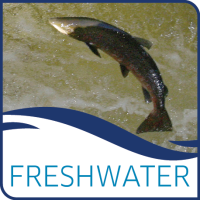The Girnock and Baddoch catchments are long-term monitoring sites where the population dynamics of spring salmon have been assessed since 1966 and 1988 respectively. These long-term monitoring sites consist of a pair of fixed traps designed to catch emigrating juvenile salmon and returning adults. Trap protocols were similar, although not identical, over the monitoring period.
Data and Resources
- Ova to Ova Stock-Recruitment Datacsv
Column Descriptions / units:
Site – Name of the trap site
Preview Download
Year...
| Field | Value |
|---|---|
| Publisher | |
| Modified | 2020-01-07 |
| Release Date | 2018-07-02 |
| Identifier | 9f612815-3873-4e95-912a-fbdfe587cbfb |
| Spatial / Geographical Coverage Area | POLYGON ((-3.0617000581697 57.066079405196, -3.4586051758379 57.022539882985, -3.5348991025239 56.881078091725, -3.4280875045806 56.872740106637, -3.0527214054018 56.980989208195)) |
| Temporal Coverage | 1966-01-01 |
| Language | English (United Kingdom) |
| License | UK Open Government Licence (OGL) |
| Granularity | Annual |
| Data Dictionary | • Ova deposition from individual females was estimated using the length-fecundity relationship reported by Bacon et al. (2012) for upland early running salmon. |
| Contact Name | Marine Scotland |
| Contact Email | |
| Public Access Level | Public |


